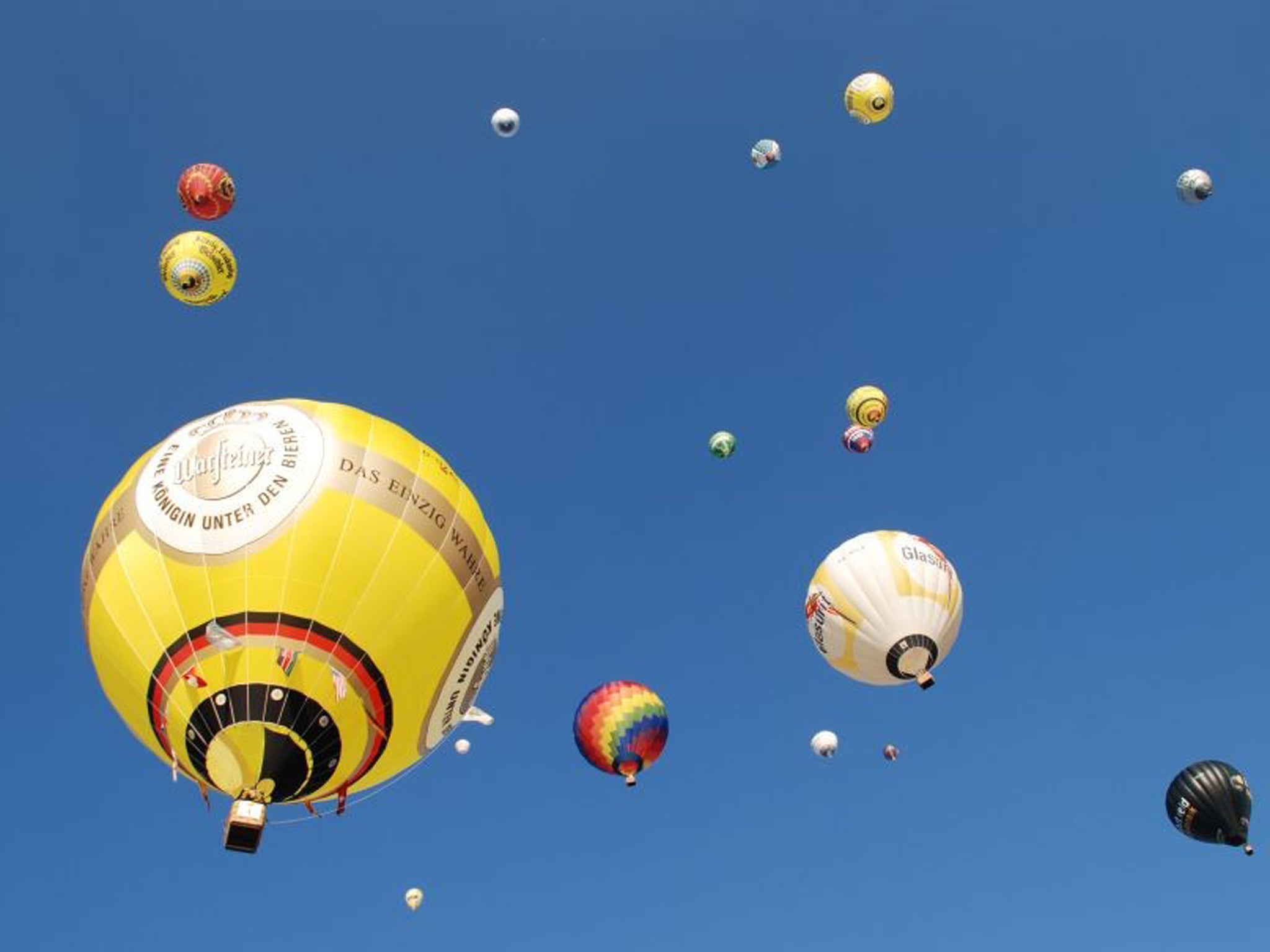Falling Upwards: How We Took to the Air, By Richard Holmes
Now a weightless pastime, ballooning once made a solid contribution to science and to war

You wait a long time for a literary book about ballooning to appear and then… well, the stock joke about coming in threes doesn't quite work because there are only two such new books afloat. In Julian Barnes's Levels of Life, the ballooning piece is only one section out of three. But, still, there's something in the air.
Richard Holmes caught the bug a long time ago. He traces his fascination to an encounter with a helium balloon at the age of four. Besides the attraction of the romance, the danger, and the views, for Holmes the footstepping biographer the appeal lies in the stories: "Show me a balloon and I'll show you a story; quite often a tall one".
The birth of ballooning in the 18th century was one chapter in his magisterial The Age of Wonder; here he has the licence to pursue more of those tall tales. Many of the pioneers had dreams of commercial success, especially in America, but the history of ballooning is mostly a catalogue of stunts, eccentric characters, fairground razzmatazz and, above all, accidents, often fatal.
The spirit of ballooning has always been three parts Richard Branson to one part genuine curiosity and exploratory awe. Time and again the balloons take off on a wave of purple sentiment and champagne and, as often as not, come crashing down. Nevertheless, the balloon has an honourable place in the history of the attempt to explore the aerial kingdom. For around 120 years it was the only way to learn about the upper atmosphere and see the earth from a panoptic viewpoint. Balloonists learnt at what height human life in the open air becomes unsustainable – around 29,000 ft (curiously, the height of Mount Everest). They learnt that insects migrate in prodigious numbers at great height. They learnt the tricks of air currents: the wind often reverses in direction with altitude, which means that it is often possible to return to the starting-point by ascending to a great height and retracing steps.
Two episodes in which ballooning was entirely serious provide narratives more enthralling than any stunt: the American Civil War and the 1870 siege of Paris in the Franco-Prussian war. In the first, the Unionists used reconnaissance balloons and success was claimed when a balloonist reported that the Confederates were withdrawing from Yorktown. But the same Civil War rang the death knell for commercial and military ballooning. They were too unreliable: the continent of North America would be knit not by balloons but by railroads, the telegraph, and eventually the aeroplane. After capture by the Unionists, the Confederates' sole balloon, made from dress silks, lived on as a "sacred relic of the Old South: beautiful, gallant, self-sacrificing, doomed".
Also gallant and doomed was the use of balloons by despairing Parisians to send messages across the Prussian siege lines in 1870. This became the main prop to French morale. Attempts were made to bring news back to Paris by balloon. Instead, a microfilm technology was developed to allow pigeons to carry up to 5000 letters each in a goose quill containing rolled-up film. Decoding them in a pre-digital age involved armies of clerks hand-copying the letters from the images magnified by a magic lantern.
This was the last serious use of untethered balloons, after which came the dirigibles, powered, steerable airships exemplified by the Zeppelins; much circus trickery, often involving women balloonists; and Richard Branson. Still, on a sunny day, a balloon sailing over a heat-hazed landscape always gladdens the heart.
'Nanoscience: Giants of the Infinitesimal' by Peter Forbes and Tom Grimsey will be published by Papadakis in October
Subscribe to Independent Premium to bookmark this article
Want to bookmark your favourite articles and stories to read or reference later? Start your Independent Premium subscription today.

Join our commenting forum
Join thought-provoking conversations, follow other Independent readers and see their replies